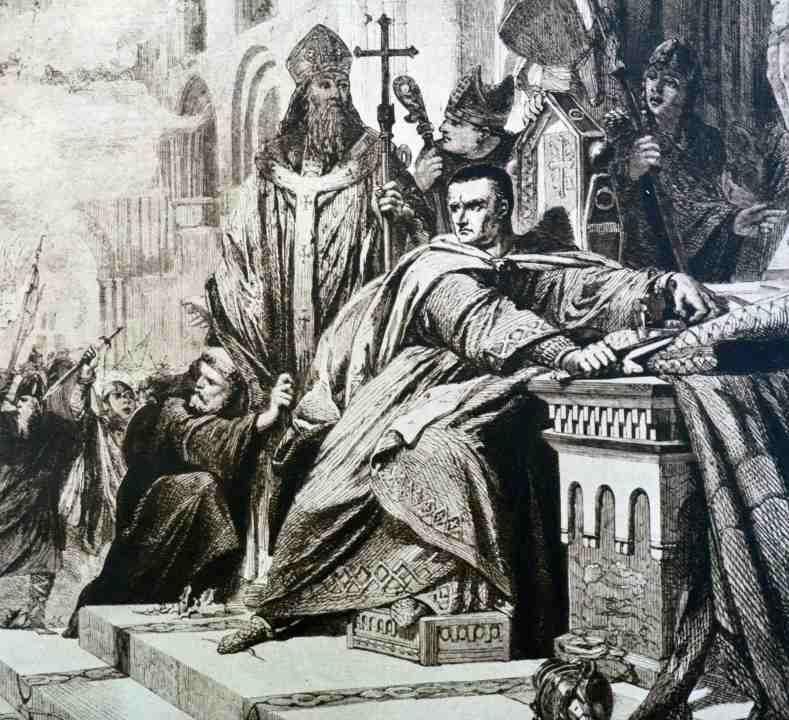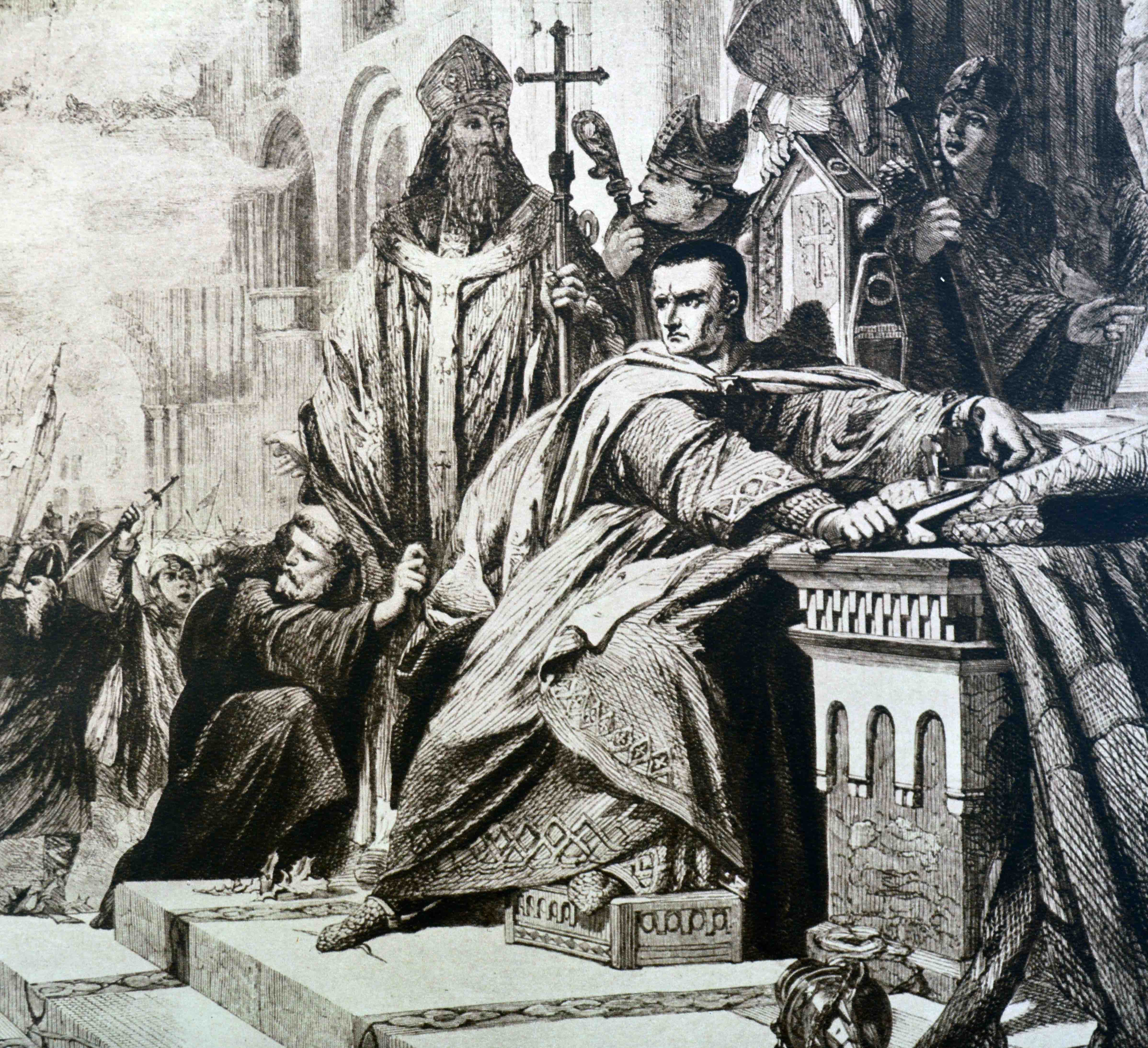Despite weeks of preparation and rehearsal, coronations don’t always go according to plan. Indeed, a botched coronation or one plagued by misfortune can be taken by the superstitious as a poor augury for coming reigns – sometimes justifiably.
Case in point: the celebrations of Tsar Nicholas II and Alexandra Feodorovna in Moscow’s Dormition Cathedral on 14 May 1896. While the hours-long ceremony for the last Tsar and Tsarina went off without a hitch, the following national holiday and public feast in Khodynka Field led to a stampede where at least 1,300 died and 1,300 more were left with serious injuries.
The cause? A day later, the Russian government gazette issued the following anodyne communique: ‘The brilliant course of coronation celebrations was darkened by a regrettable event. Today, 18 May, long before the start of the national holiday, a crowd of a few hundred thousand moved so swiftly to the place of distribution of treats on the Khodynka Field, that the elemental force crushed a multitude of people…’
French journalist Camille Cerf made the only film recording of the coronation ceremony (in fact the first film shot in Russia); needless to say, the Khodynka Field disaster was not captured on celluloid, as it was an event intended for the masses, not the nobility.
Closer to home, William the Conqueror (aka William the Bastard, at least prior to his invasion of England) had a most regrettable coronation at Westminster Abbey on Christmas Day 1066. Cries of acclamation for the new King from the assembled Norman and Anglo-Saxon dignitaries led to his soldiers setting fire to surrounding properties in fear of a riot. Start as you mean to go on, I guess.
More than a century later, in 1189, William’s great-great-grandson Richard I (‘The Lionheart’) was also crowned at Westminster Abbey. When Jewish leaders arrived at the coronation banquet with tributes for the new King, members of Richard’s household flogged and stripped them, leading to talk he had decreed that all Jews were to be slaughtered. Jewish homes were set on fire; some Jews were forcibly converted, while others either fled or sought refuge in the Tower of London.
George IV, who had sweated heavily under the weight of his robe, later commented: ‘I would not endure again the sufferings of that day for another kingdom!’
Richard executed those he held responsible for the murders (including rioters who had accidentally burned down Christian homes), issuing a royal writ ordering that the Jews be left in peace. Despite this, further violence occurred, including a particularly infamous pogrom in York in 1190.
Other coronations have been less bloody, but no less traumatic – or sometimes simply embarrassing to the participants, such as the hideously expensive enthronement of George IV at Westminster Abbey in July 1821.
The series of tragicomic events that unfolded during the corpulent 59-year-old’s big day included the exclusion of hated wife Queen Caroline from the ceremony, the thieving of silver plate at the evening banquet, problems with the prosthetic leg of a ceremonial server, hot wax dripping on guests from the chandeliers and the vain new King’s ‘unseemly jog trot’ in order to avoid the shielding ceremonial canopy of the Barons of the Cinque Ports (who chased after him) and be seen by the largely indifferent crowds. George, who had sweated heavily under the weight of his robe, later commented: ‘I would not endure again the sufferings of that day for another kingdom!’
The lead-up to his coronation was immortalised in BBC1’s popular series Prince Regent (1979), with the ever-charming Peter Egan (Ever Decreasing Circles) playing the frivolous, foppish monarch, portrayed as rather nicer than he probably was. Richard E. Grant (Withnail and I) also essayed George in the more factually based BBC TV movie A Royal Scandal (1997), where the semi-farcical coronation is covered in some depth.
George IV’s grand-niece, Queen Victoria, had a less humiliating time at her coronation in June 1838. But although depicted as a suitably stately occasion in 2009’s The Young Victoria, in real life the five-hour marathon was beset by problems, due in part to a lack of rehearsal time. The elderly Lord Rolle collapsed on the chapel stairs; Lord Surrey (Treasurer of the Household) caused a scrum in the crowd by flinging silver coronation medals at them; and the music was made a hash of by Sir George Smart, who foolishly opted to conduct and play the organ at the same time. The Spectator gave its verdict on the decrepit Master of the King’s Musick, Franz Cramer, stating he did ‘proclaim to the world his inability to discharge the first, and the most grateful duty of his office – the composition of a Coronation Anthem’.
To cap it all, the Queen’s coronation ring was mistakenly made for her little finger and had to be jammed on to her ring finger by the Archbishop of Canterbury William Howley. Victoria later wrote in her journal: ‘The consequence was that I had the greatest difficulty to take it off again, which I at last did with great pain.’
Lord Rolle collapsed on the chapel stairs; Lord Surrey caused a scrum in the crowd by flinging silver coronation medals at them; and the music was made a hash of by Sir George Smart
Further back in time, prior to his restoration in 1660, Charles II endured a largely forgotten (south of the border) 1651 coronation in Scone where he reluctantly promised to uphold the Scottish National Covenant and Solemn League and Covenant. As he converted to Catholicism on his deathbed, we can possibly assume that he crossed his digits when taking the oath. Charles II was not anointed with papal oil, judged ‘Popish’ by the Covenanters. Similarly, there was no Eucharist, and the crown was placed on the King’s head by the Marquis of Argyll instead of a cleric.
Napoleon famously donned the ‘Crown of Charlemagne’ (in fact made especially for the occasion) at Notre-Dame Cathedral in December 1804, to the rumoured surprise of Pope Pius VII, who apparently believed that was to be his role in the ceremony (although this has been disputed since, with the prelate knowing in advance and raising no objection, which was unlikely given the circumstances).
Six months later in Milan Cathedral, Napoleon wore the ancient Iron Crown of Lombardy and also made himself King of Italy. Not bad for a humble Corsican lad who began his military career as a second lieutenant in one of Louis XVI’s artillery regiments.
Self-proclaimed ‘Emperor’ Jean-Bédel Bokassa (1921-1996) of the Central African Republic further crippled the impoverished country with his lavish coronation in December 1977, modelled on that of Napoleon. It cost one third of the poverty-stricken country’s annual budget and the entirety of France’s aid for the year. Bokassa was overthrown in 1981 but returned from exile in 1986 and was tried and imprisoned – on charges including murder, cannibalism, assault and embezzlement.
Suddenly, perhaps Charles III’s slimmed-down coronation doesn’t seem like such a bad idea…







Comments